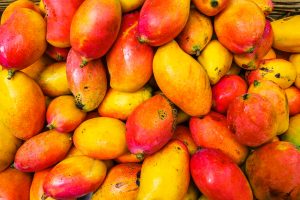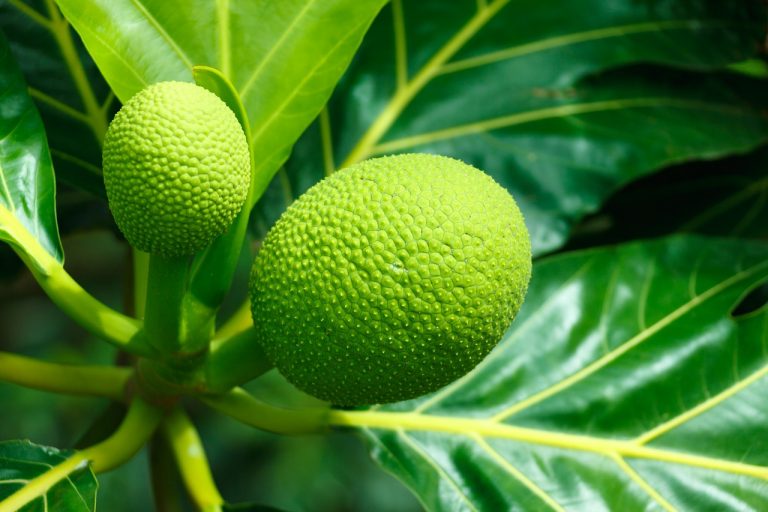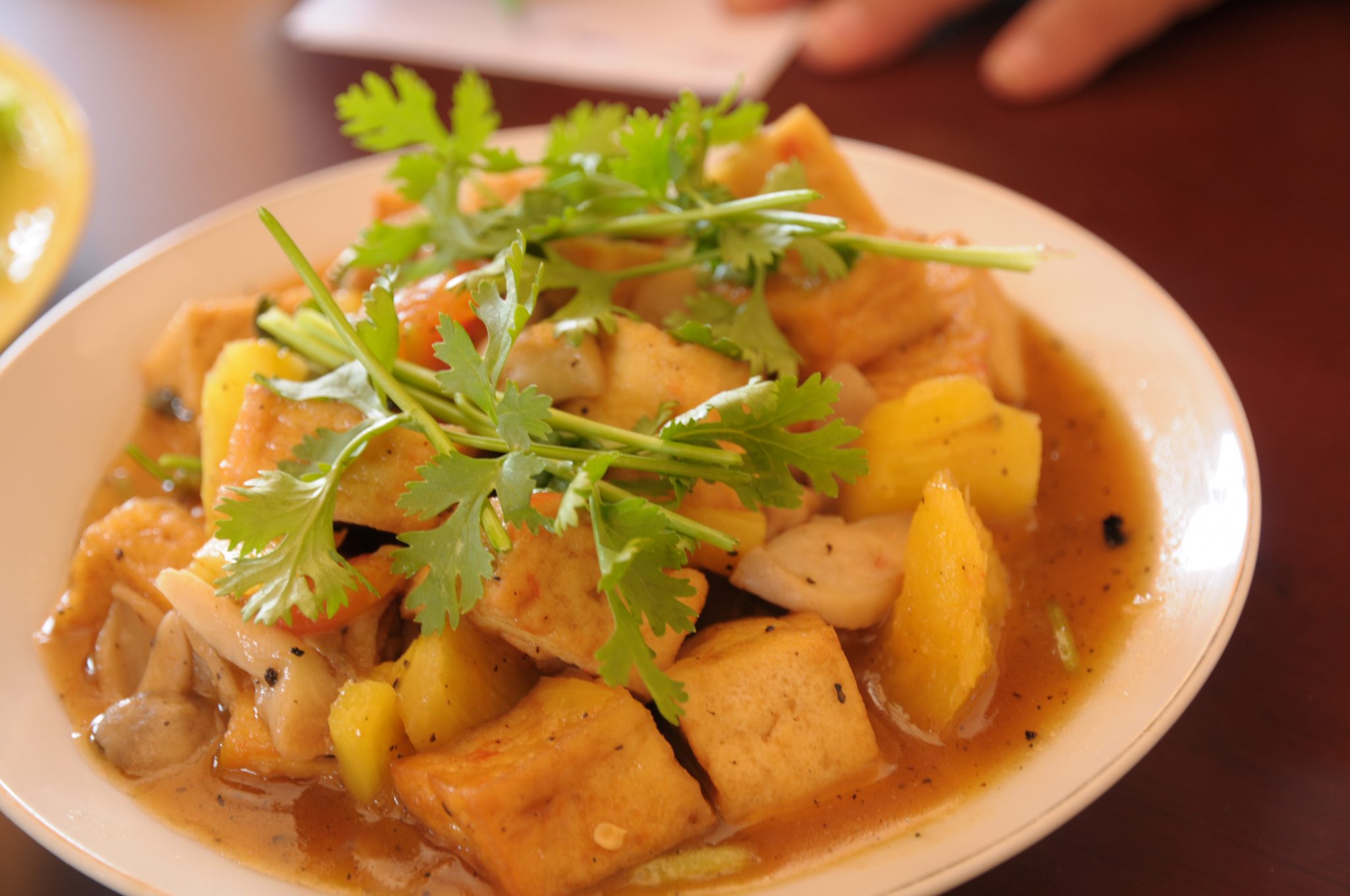
The Dramatical Origins of
Breadfruit in the Caribbean
Thank You Captain Bligh

The Caribbean is an area of convergence for people from many nations. We are British, Spanish, French, Portuguese, Dutch, African, East Indians, Chinese, Lebanese, and Syrian – the list goes on.
But it is not only people that converged here; food in the form of fruits and vegetables also made the journey. For example, mangoes, which originated in India, are everywhere in the Caribbean, having been spread largely by the process of colonization. Sugar cane made its way to islands like Barbados, thanks to the Sephardic Jews of Brazil.
But few foods have as much drama attached to their origins as the breadfruit, which is now a staple food for many people in the Caribbean. In Barbados, for example, there is many a backyard and gully with a green and shady breadfruit tree.
Breadfruit a Staple in Many Caribbean Households
Green with a dimpled skin, about the size of a soccer ball, the breadfruit is a nutritious, high-energy fruit, high in vitamin C, fibre, and potassium. With a bland, nutty flavor, it is also versatile.
You can slice it thin and deep-fry it to create delicious chips. You can boil it or even roast it over a campfire. Bajans like it when it has been pureed or blended to the consistency of creamy mashed potato. We call this breadfruit cou-cou.

So, what is the drama behind the origins of breadfruit in the Caribbean?
Well, it starts in 1787 when a British sea captain by the name of William Bligh set sail for Tahiti to acquire a cargo of breadfruit saplings. His assignment was to bring them to the British islands in the West Indies to provide a nutritious, easy-to-grow, high-energy food for slaves on sugar plantations. It was the Caribbean’s answer to the potato, and had been a staple food for South Pacific islanders for centuries.

Bligh hit a snag. He arrived in the off-season and had to wait five months on the island to gather the crop he needed. His men made the most of this down-time on land, frolicking with their Tahitian “wives”.
Discipline deteriorated, and it didn’t help matters that Bligh was a short-tempered, irascible boss. When they set sail again, things came to a head. Bligh’s master mate, Fletcher Christian, instigated the now famous Mutiny on the Bounty and put Bligh and 18 loyal sailors adrift in a launch.
Not to worry; despite his bad temper, Bligh was a superb navigator. After about 50 days at sea, he and his men landed at Timor in the Dutch East Indies and then made their way back to England.
What happened to the breadfruit saplings, we don’t know. But it is likely they went overboard, because Christian and his crew headed back to Tahiti and then high-tailed with their Tahitian wives and several others to Pitcairn Island, a remote spot in the vast Pacific.
Once there, they burnt the Bounty to prevent discovery. It wasn’t until 1808 that the truth was finally uncovered. Their descendants live there today.
Undaunted, Bligh set out for Tahiti again in 1791, this time with two ships. He had obviously learnt his lesson. He safely delivered his cargo of breadfruit to the British West Indies, and the rest is culinary history.
Thank you, captain, we owe you.
Author:
Richard Thomas

An award-winning editor and writer, for the past 40 years Richard Thomas has been shaping stakeholder communication for corporations and their senior executives in Canada, Australia and his native Barbados, where he now lives and works as a corporate communications practitioner.
Here are Related Articles That Might Also Interest You
![]()




This is such a superficial, unsensitive article! What about all the rapes, violence and racism behind this “adventure”? What about the whole context these voyages were about? “…and the rest is culinary history. Thank you, captain, we owe you.” – this is ridiculous and offensive to the natives of the lands you are writing for! …mister corporate communications practitioner. This article doesn’t communicate much, sir!
Thank you very much, Dan, for sharing your perspective. We appreciate it.
Perhaps you may want to have a look at the piece that we did on Caribbean food. We trust that, together, the ‘whole story’ will be correctly captured in this and other articles from Exceptional Caribbean.
Agreed Dan. Permit me to refer you to my BREADFRUIT HISTORY STORIES on my Facebook page 2020 to 2021 and consolidated on Academia.org
“Thank you, captain, we owe you.”???? Really now? We don’t owe him a thing! That’s like saying- thank you for slavery. Black people were destabilized and unfortunately, we still are. It wasn’t that he was trying to feed slaves with nutritious and delicious food- I’m sure it was more because it was easy and cheap to grow and prepare. Honestly, this rubbed me the wrong way!
Thanks Donna. You are totally correct.
Sometimes, we have to see the light in the midst of the darkness and stand in a state of appreciation. Consider where we will be if slavery had not happened. I hate what was done to our ancestors. It was cruel, torturous and inhumane. At the same time, their struggle and hardships paved the way for us to reap the benefits of their sufferings. I love being from and living in the Caribbean. And that could never be without slavery.
This is an absurd and far-fetched article. I am not even sure why the whole account of the Tahitian “wives” and the frolicking was even necessary to the Breadfruit history.
It’s like saying the immoral escapades of the Captain play an important role in the delivery of breadfruit to the Caribbean. Ironically, the article clearly points out that there is no evidence as to what was done with the breadfruit because frolicking and fraternising and abuse of the Tahitian women was higher on the agenda.
Honestly speaking, many parts of the article seem irrelevant to the stated caption of the article.
This is top-notch! I wonder how much effort and time you have spent to come up with these informative posts.